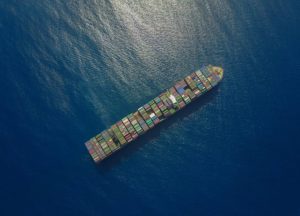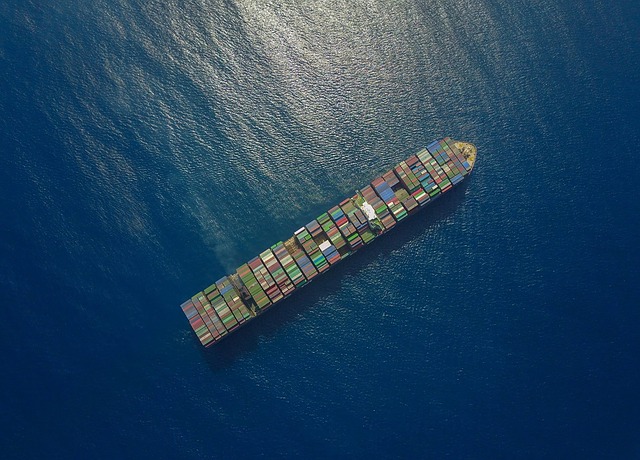 The Association of International Shipping Lines (AISL) has pointed out that while the Philippines’ Bureau of Customs (BOC) may register and regulate foreign shipping lines, the agency cannot involve itself in commercial matters such as carriers’ rates and charges.
The Association of International Shipping Lines (AISL) has pointed out that while the Philippines’ Bureau of Customs (BOC) may register and regulate foreign shipping lines, the agency cannot involve itself in commercial matters such as carriers’ rates and charges.
The association’s statement came following the BOC announcement that it would draft a customs administrative order (CAO) designed to register and regulate international shipping lines calling the Philippines. The order will presumably address complaints against shipping lines, including their ability to unilaterally charge fees as they see fit.
AISL general manager Atty. Maximino Cruz, in an email to PortCalls, said the association does not dispute that international shipping lines are identified as third parties under Section 1226 of the Customs Modernization and Tariff Act (CMTA), which is the basis for the proposal to register and regulate foreign shipping lines.
“But it has to be understood that supervision and regulation by BOC over third parties is not intended to be all-encompassing, much less absolute,” Cruz said.
BOC’s core functions
He added that the power granted to BOC to supervise and regulate third parties “should be directly related to the core function of that office.”
This core function, Cruz said, refers to enhancing government revenues by ensuring the collection of the correct duties and taxes; combating smuggling, preventing the entry of contraband and anti-social goods into the country and other forms of Customs fraud; instituting systems to strengthen Customs control; and streamlining and modernizing existing rules and procedures to facilitate the Customs clearance process.
Cruz emphasized that outside of this core function, “Customs cannot assert its authority over international shipping lines, more particularly on matters which are already commercial in nature such as, but not limited to, freight rates, imposition of fees, rates and other charges which are associated with, and/or incidental to, the contract of carriage, otherwise such act will be considered done in excess of its jurisdiction as it constitutes direct interference with the workings of a free market economy.”
At an earlier Supply Chain Management Association of the Philippines general membership meeting, BOC-Port of Manila Deputy Collector for Operations Atty. Ma. Lourdes Mangaoang said BOC decided to draft a CAO on the registration and regulation of international shipping lines servicing the Philippines after the customs bureau conducted a port users’ summit “wherein we realized that there are so many complaints regarding the shipping lines.”
Stakeholders have for years raised the issue of alleged exorbitant fees imposed by foreign shipping lines, but no government agency has looked into the concern since it is not clear which agency has jurisdiction over the carriers; that is, until BOC’s recent port users’ summit where it was pointed out that the CMTA provided BOC the legal framework to register and regulate carriers as third parties.
Mangaoang acknowledged the BOC does not have the authority to regulate or control freight charges of foreign shipping lines because these are covered by international conventions such as those set by the International Maritime Organization.
However, she opined that “the bureau may regulate the local charges by the shipping lines,” she said, citing, as examples, fees such as terminal handling charge, container imbalance charge, container deposit, detention, and container cleaning fee.
Cruz, in a chance interview with PortCalls on September 12, said AISL will be participating in the drafting of the CAO, which Mangaoang said might start this month.
Reduction of dwell time
Apart from regulating international shipping lines, there is also a proposal by some sectors for the BOC to reduce the dwell time of containers in the country from 90 days to 60.
Cruz said the BOC should first assess whether the previous reduction of dwell time for empty containers in 2015 from 150 days to the present 90 days, as provided for in Customs Administrative Order (CAO) No. 01-2015, served its purpose.
Cruz noted that CAO No. 01-2015 was issued based on the premise that empty containers significantly contributed to the port congestion crisis in 2014.
“As what we are witnessing today, it is apparent that CAO No. 01-2015 was not able to attain the objective for which it was issued. Despite the reduction of the dwell time for foreign containers from 150 to 90 days, the number of empty containers in the Philippines did not improve,” Cruz pointed out.
On the contrary, the ratio between import and export containers today is still 3:1. And with import volume growing at an annual rate of 6% to 7%, compounded with the onset of the peak season, “the situation will not get any better,” he said.
The proposal to further reduce the dwell time to 60 days “is being heavily influenced by the problem faced by truckers in the return of empty containers to off-dock empty container depots,” Cruz added.
He said that similar to what happened in 2014, the proposal is “again based on a mistaken notion,” this time that “the difficulty in the return of empty containers to off-dock depots is being attributed to the increasing number of empty containers.”
“But it needs to be emphasized that reducing further the dwell time from 90 to 60 days will not mitigate the problem on empty return,” Cruz said, noting this is hardly the solution to the problem.
“The present problem on the return of empty containers lies (in) the scarcity of CY (container yard) space. Off-dock depots situated in Manila and in the Camanava (Caloocan-Malabon-Navotas-Valenzuela) area are declining in space. Some have either closed down or downsized because of rising lease cost. The problem will be exacerbated further more by the annual 6%-7% increase in import volume and the reluctance of local governments in Metro Manila to issue business permits to CY operators,” Cruz explained.
To ease the problem of return of empty containers, Cruz said more CY facilities should be established outside of Metro Manila.
“We can now see CY facilities in Bulacan, Cavite and Batangas. But we still need more of those if we want to see a normalization in the return of empty containers,” he noted.
Continuing the 90-day dwell time
Cruz said AISL was also informed about a middle-ground proposal that the proposed 60-day dwell time may be extended by 30 days based on justifiable grounds.
“This middle-ground proposal could spawn problems since experience has shown that the exercise of discretion in the grant of extension, even if based on justifiable grounds, serves as an inducement to corruption. AISL is of the position that the present 90-day dwell time for foreign containers should be maintained,” Cruz said.
On the other proposal, which is to change the reckoning period for counting the 90-day period dwell time to the date of discharge of the last container from the vessel instead of the date in the equipment interchange receipt (EIR), Cruz said this “is unfair and disadvantageous for shipping lines as they do not yet have full control of their containers.”
He explained that this could create problems especially when loaded containers are put on alert or seized by BOC before they can be released from the port.
“While the matter is between the importer and BOC, the container, which is a shipping line’s equipment, is being held hostage as is being done today,” Cruz added.
He said AISL recommends maintaining the current rule of counting the 90-day dwell time from the return of the empty container to the shipping line’s nominated depot, as indicated in the EIR.
“It is only when the empty container is returned to the empty container depot that shipping lines regain full control of their container,” he pointed out.
The proposed change in the reckoning period for the dwell time of containers is included in a draft CAO that has been submitted to the Department of Finance for approval. – Roumina Pablo





